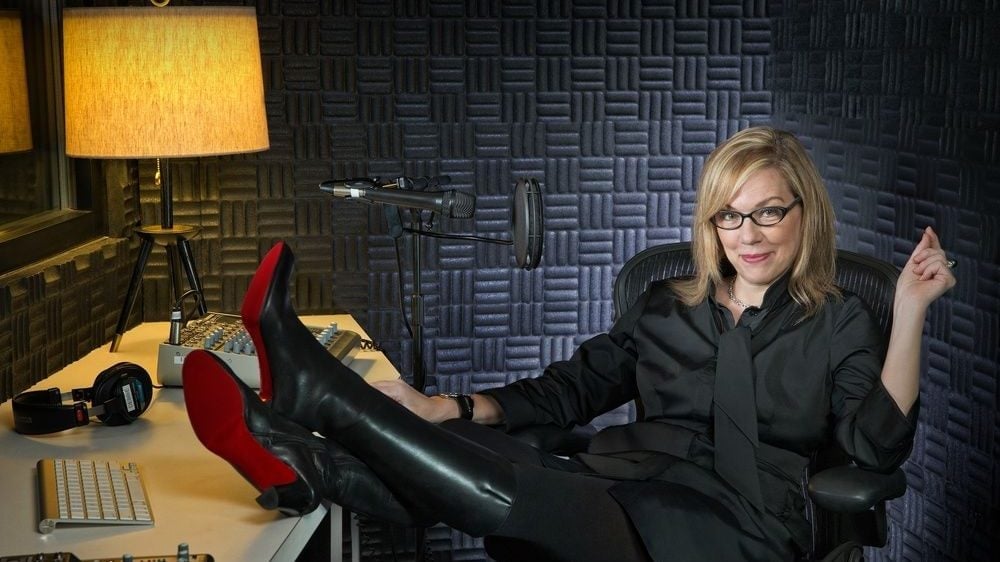One of the world’s best podcasters shares her secret to leading fascinating interviews
Everyone has a podcast these days. Many of these podcasts host cool people to talk about cool things. And yet, many of these podcasts suck. They’re boring and repetitive. I listen to them to fall asleep at night.


Everyone has a podcast these days. Many of these podcasts host cool people to talk about cool things. And yet, many of these podcasts suck. They’re boring and repetitive. I listen to them to fall asleep at night.
Those who struggle to make people say interesting things in an interview would be smart to learn from the woman who launched one of the first, and best, podcasts to date: Debbie Millman. One of the most creative and influential designers, authors, and educators in business today, Millman founded the podcast Design Matters in 2005 and has hosted it since, interviewing more than 400 artists, designers, and cultural commentators, from Milton Glaser to Malcolm Gladwell, Shepard Fairey, Barbara Kruger, and many more.
The show, one of the longest-running podcasts around, is downloaded millions of times every year and has won a Cooper Hewitt National Design Award, among other recognitions. Millman, 55, is the author of six books, including two collections of interviews. She was a lead writer of the design blog Speak Up and co-founded the world’s first graduate program in branding, at the School of Visual Arts in New York City. Her illustrations have appeared in publications like The New York Times and New York magazine.
After speaking about branding at the Lesbians Who Tech Summit in New York on Sept. 13, Millman fielded questions from the audience.
“You’re an expert conversationalist, but you’re also an expert at making people feel comfortable, and say interesting things on your podcast,” said one long-time Design Matters listener. “Do you have any tips and tricks about having conversations or interviews with people you admire?”
Millman offered these tips in response:
Think of interviewing as a game of pool
The best interviewers realize that natural conversation comes from short, pointed prompts. Listeners want to hear the interviewee,and can get frustrated when the interviewer waxes poetic.
“I think a great conversation, or a great interview, is like a game of pool,” said Millman. “When you’re playing pool, you want to get the billiard balls in a hole, but you also want to leave the rest of the balls on table so you can continue to get more billiard balls in more holes.”
As an interviewer, your question is the cue ball (the white one): It should land an awesome response (sink a ball), and spark many other conversational directions (disperse the other balls on the table).
“What I try to do is ask a question that allows a conversation to go in way that I sort of already predicted it might,” says Millman. “But I know enough about the person I’m talking to that whatever direction they go in, I’m ready and prepared.”
Relentless preparation
“I take my interviews really, really seriously, and I do a lot of preparation,” said Millman. “I believe in what I call relentless preparation, where you have to visualize every scenario: What are the possible responses that you might get to any question?”
Initially, Millman’s relentlessness was motivated by being really nervous to talk to the designers, artists, and academics she had on her show. “I didn’t want to be called out for not knowing something,” she said. “And I felt like I was overdoing it, but I found that this relentlessness gave me a sense of false confidence, in that I felt prepared, mentally and as well as emotionally, and intellectually.” (By “false confidence,” perhaps Millman meant that the intense preparation bolstered her self-confidence, though she was still internally anxious.)
Until recently, Millman did all her own research—now she has a research assistant—and always followed the same methodology.
“Before I interview someone, I research them until I have in the neighborhood of 40 to 50 pages of research,” she explained. “Then I chronologically lay out my questions from the beginning, where I want to start, to the end, where I want the conversation to go, ideally.”
Millman then culls her 40-plus pages—covering everything from the person’s accomplishments, failures, personal life, and responses in previous interviews—into 10 pages of questions. After two more rounds of edits, she nets out at about five pages of questions and ideas, which makes for a one-hour interview, she says.
What to ask
Millman’s advice for the first, and most important, question: Aim for surprise.
“In every interview, I try to start with something that completely shocks the persona I’m talking to, so they laugh, and immediately are at ease by realizing how much I know about them, and how much respect I’m showing them in the body of knowledge I have,” she says. “That way, they hopefully become more comfortable revealing things.”
“From there, I start by asking about the trajectory of [the guests’] lives,” said Millman. “I’m endlessly fascinated by the trajectory of a person’s existence: How do you become who you are? And what are the choices that you’ve made that have led you to become who you are? I’m really not all that interested in talking to people about their massive success and all the great things they do. I’m much more interested in talking about their struggles, and their obstacles, that made them who they are.”